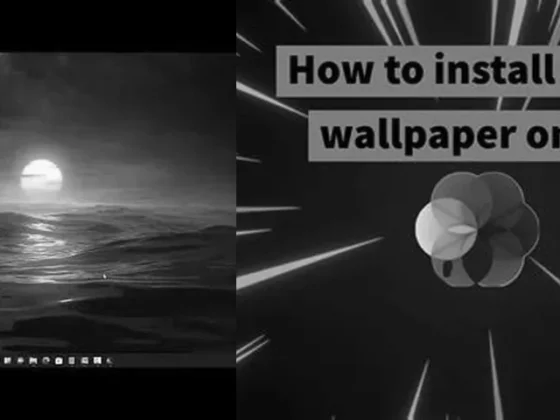How To Do A Book Talk For Adults: Are you an avid reader who wants to share your love for books with other adults? Do you find yourself struggling to engage your audience during a book talk? Look no further! In this blog post, we will guide you through the art of delivering an impressive book talk for adults. From understanding the essence of a book talk to creating your own unique style, we’ve got you covered. Get ready to captivate your audience and become a master of the book talk game. So, grab your favorite book, and let’s dive in!
Understanding the Essence of a Book Talk
Imagine you’re at a gathering where the conversation turns to books. A fellow guest begins to speak passionately about a recent read, and within minutes, you’re captivated, eager to get your hands on a copy. That’s the power of a well-executed book talk. But what is a book talk, exactly?
At its core, a book talk is a persuasive speech given with the intent of convincing others to read a particular book. It’s not merely a plot summary or a book report, but a dynamic presentation that highlights the book’s most intriguing elements without spoiling the story. A good book talk sells the experience of reading the book rather than detailing every twist and turn.
Preparing Your Book Talk
Before you can captivate your audience, you must have a firm grasp of the material. This means reading the book thoroughly and taking detailed notes on the plot, setting, characters, themes, and any potential hooks that could pique interest. These notes will form the backbone of your talk, helping you to structure it effectively.
Selecting Your Hook
The beginning of your book talk is crucial. You need an attention-grabbing hook that will intrigue your listeners and make them want to learn more. This could be a provocative question, a surprising fact about the book, or an engaging anecdote related to its themes.
Engaging Your Audience with Style
Once you’ve begun, it’s important to maintain your audience’s interest. This can be done by acting out specific actions, using props, and moving around as you talk. These techniques add an element of theater to your presentation, making it more than just a speech—it becomes an experience.
Structuring Your Book Talk
While a book talk should be short, it must also be structured in a way that is logical and engaging. Here’s how you might break it down:
Introduction: Set the Stage
Start with your hook, but don’t reveal too much. The goal is to tantalize, not to tell. Your introduction should be a doorway that invites the audience into the world of the book.
Body: Offer a Glimpse
Without giving away major plot points, share a bit about the plot, the characters, or the themes. If you’re focusing on a character, for instance, you might describe a defining moment or a personality trait that makes them compelling. If it’s the plot, perhaps highlight the conflict or the setting in a way that stirs curiosity.
Conclusion: The Irresistible Hook
Conclude each book talk with another hook—something that leaves your audience on the edge of their seats. It could be a rhetorical question or a teaser that hints at the depths of the story without revealing it. Then, hold up and display the book, announcing the title and author as a formal invitation to explore further.
Adding Variety to Your Book Talks
Variation keeps things interesting. If you’re giving multiple book talks in a session, mix up the lengths and styles. Some talks might be more animated, while others are reflective or intimate, depending on the book’s content and what you think will best resonate with your audience.
Timing Is Everything
Timing can significantly impact the effectiveness of a book talk. While they should generally be no longer than 3-5 minutes, playing with timing can keep your audience engaged. A brisk, one-minute talk might be perfect for a fast-paced thriller, while a more leisurely pace could suit a deep, thought-provoking novel.
Creating Your Own Book Talk Style
While it’s beneficial to observe others and learn from their techniques, your book talk will be most effective if it’s authentically you. Create your own style—one that reflects your personality and your relationship with the book. If you’re naturally humorous, don’t be afraid to inject wit into your talk. If you’re more serious, let your depth of insight shine through.
Reading an Excerpt
Consider reading an excerpt from the book during your talk. Choose a passage that’s particularly compelling or representative of the book’s tone or themes. This can serve as either a hook or a powerful closer, leaving your audience with the author’s own words echoing in their minds.
Practical Tips for Delivering a Captivating Book Talk
- Know your audience: Tailor your talk to the interests and reading preferences of your listeners.
- Practice: Rehearse your book talk to ensure smooth delivery and to help manage any public speaking jitters.
- Be passionate: Your enthusiasm for the book is contagious—let it show!
- Use visuals: If appropriate, incorporate visual aids or background music to enhance your presentation.
- Stay flexible: Be prepared to adapt your talk on the fly based on your audience’s reactions.
Conclusion: The Goal of a Book Talk
Ultimately, the goal of a book talk is to share your excitement about a book and to inspire others to read it. It is an art form that combines elements of persuasion, performance, and storytelling. By following the principles outlined here and infusing your own creativity and passion, you can craft book talks that are not only informative but also deeply engaging, turning each one into a ‘commercial’ that listeners won’t be able to resist.
And remember, a great book talk does more than just promote a single book—it fosters a love of reading and contributes to a vibrant literary culture. So take the stage with confidence, and let the magic of your book talk unfold.
FAQ & Related Questions about How To Do A Book Talk For Adults?
Q: What is a book talk?
A book talk is a short speech designed to encourage someone to read a book by giving an idea of the plot, characters, or themes of the book. It is not a summary of the whole plot or a giveaway of the ending or major plot points.
Q: How long should a book talk be?
A book talk can range from 30 seconds to 2 minutes in length. It should be concise and engaging to capture the audience’s attention.
Q: What should I include in my book talk?
In your book talk, you should include information about the plot, setting, characters, themes, and a hook – like a question – to grab the audience’s interest. You can also read an excerpt from the book if it is appropriate and adds to the overall impact of your talk.
Q: Can I add my own style to a book talk?
Yes, absolutely! It is encouraged to do your own thing and create your own style when delivering a book talk. You can move around as you talk, act out specific actions, and use props where appropriate to make your talk more engaging and memorable.
Q: How should I end my book talk?
To end your book talk, you can use a “hook” – a captivating statement or question – to leave the audience intrigued. Additionally, hold up and display the book, and announce the title and author to make it easier for the audience to remember and find the book.


